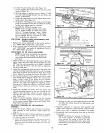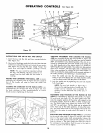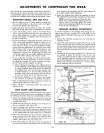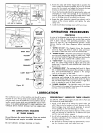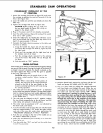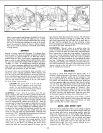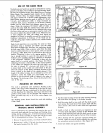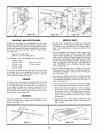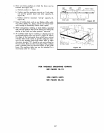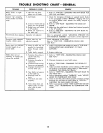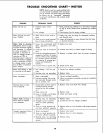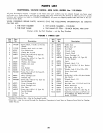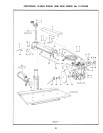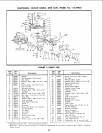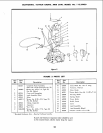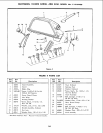
6. There are three positions in which the fence can be
located. (See figure 43.)
a. Normal position (1, figure 43.)
b. Position used for maximum cross-cut on 1-inch mate-
rial and for greater bevel and miter capacity (2,
figure 43).
c. Position used for maximum "out-rip" capacity (3,
figure 43).
7. Keep all cutting tools, such as saw blades, drills, mold-
ing cutters, dados, etc., sharp, and do not "force feed"
work enough to drastically reduce motor speed.
8. When using planer, molding, or dado blades, repeated
light cuts will produce best results. Deep cuts reduce the
quality of the finish and often produce "tear-outs".
9. An auxiliary table top for molding or shaping may be
constructed similar to the one shownin figure 44. Notice
the shape of the back guide fence which has a cut-out
5-inches wide at the center to provide adequate clear-
ance for the molding head and cutters. Also, a wider
clearance (marked "A") should be cut out to allow for
the saw motor. Make sure the front edge of the auxiliary
table is parallel with the forward surface of the guide
fence. The auxiliary table top can be attached to a
work bench with "C '° clamps.
ii
REAR TABLE TABLE SPACER BOARD
f/, FRONT TABLE
I
vO v I
Figure 43
RADIAL SAW
TABLE
Figure 44
I
LAMP ON
EACH END
SUPPORTS
I" x 2" -- 32" LONG
I
FOR TROUBLE SHOOTING CHARTS
SEE PAGES 18-19
FOR PARTS LISTS
SEE PAGES 20°26
17



